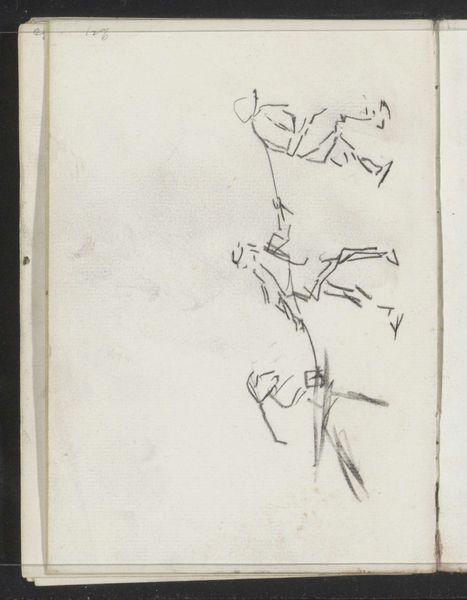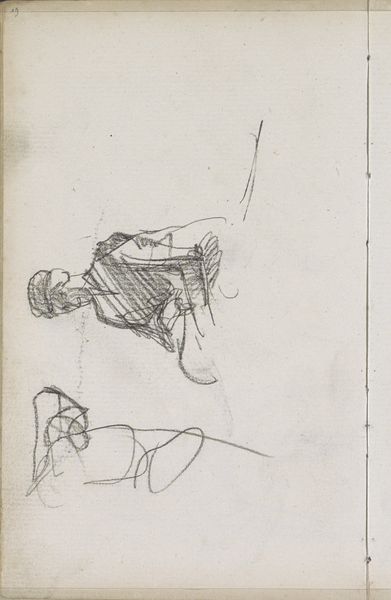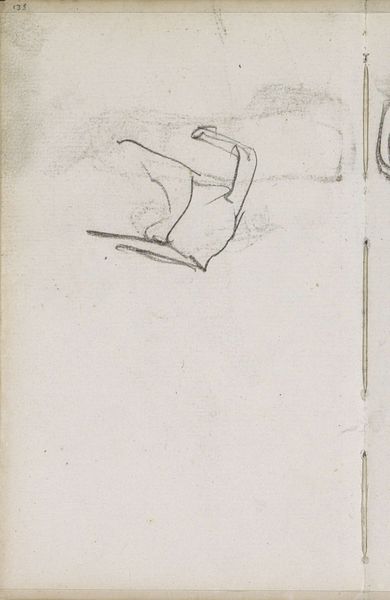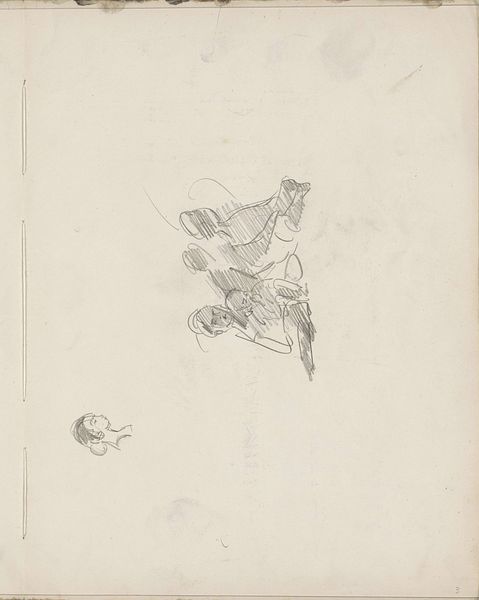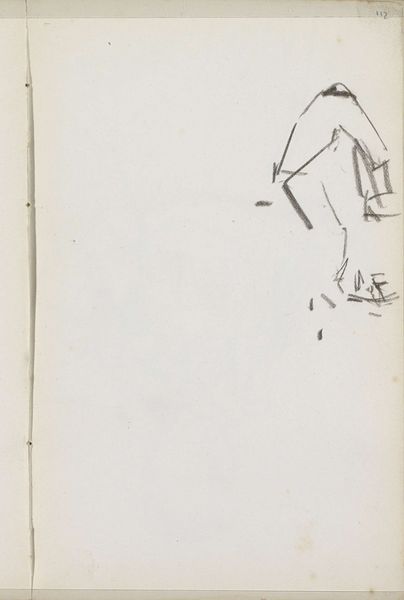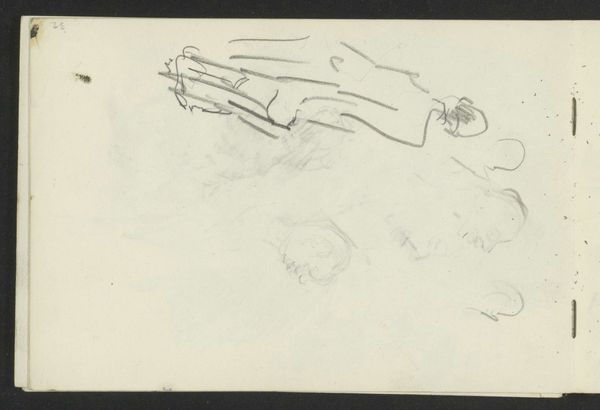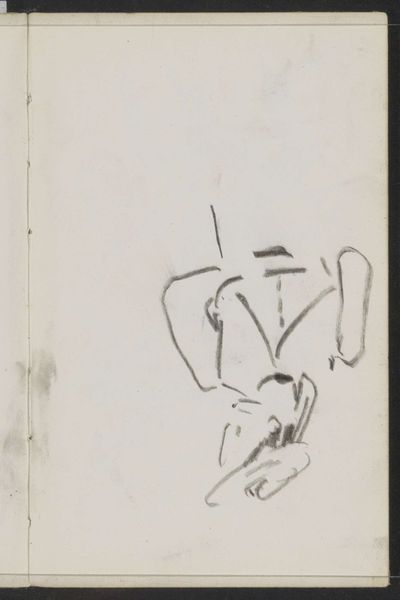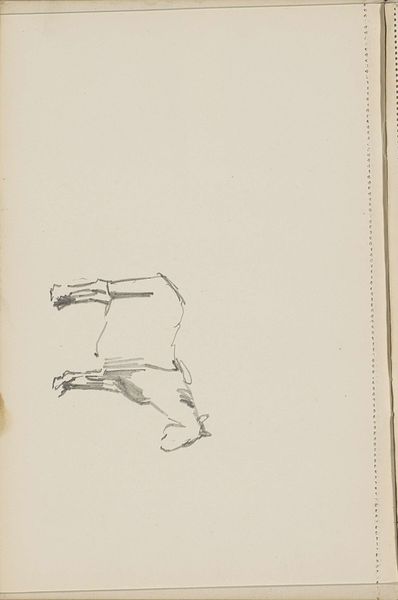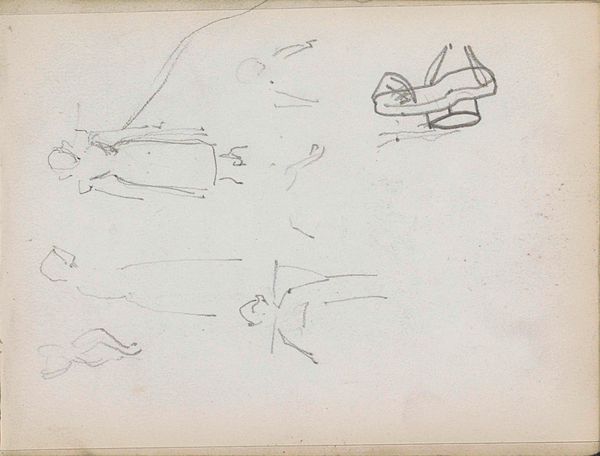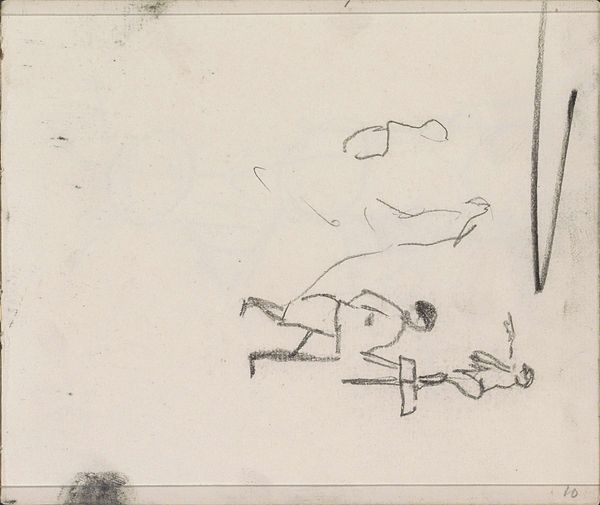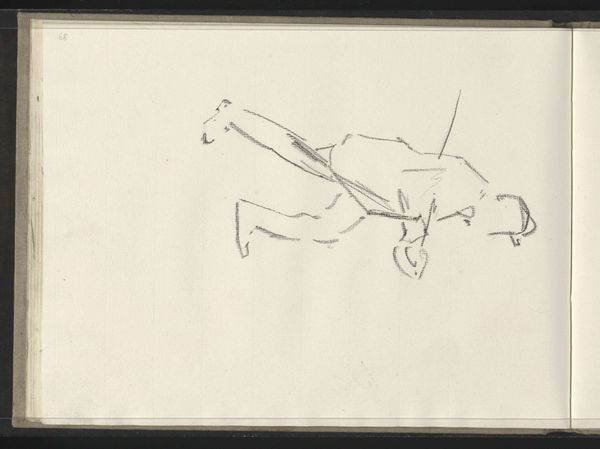
drawing, paper, pencil
#
drawing
#
figuration
#
paper
#
pencil
Copyright: Rijks Museum: Open Domain
Curator: Here in the Rijksmuseum, we have "Twee figuurstudies," or "Two Figure Studies," by Isaac Israels, a drawing executed in pencil on paper sometime between 1875 and 1934. Editor: My initial reaction is one of swift movement. The sketch lines are minimal but convey figures in either dynamic motion, perhaps leaping, or in a moment of collapse. The visual sparseness, for me, speaks to instability and transient moments. Curator: Absolutely. Considering the period, Israels was operating in a time when artists were challenging academic traditions. Quick sketches like this were not meant for public consumption in the same way that highly finished, Salon-style paintings were. Instead, they acted as private explorations of form, posture, and the fleeting essence of life, quite distinct from the more formal portraiture and historical painting dominating the Dutch art world at the time. This challenges ideas about artistic perfection that the establishment heavily pushed. Editor: It feels raw and immediate, lacking in artifice. What draws me is the lack of embellishment; the symbolic language here lives more in what isn’t stated than what is. I wonder what feelings were being evoked and what role, if any, social commentary might have had, given the symbolism. Curator: Israels came from an artistic family and moved within the circles of The Hague School, a progressive group concerned with depicting the everyday life of common people. Therefore, though the action isn't clear, there’s a decided choice to focus on ordinary bodies in an undefined space, resisting idealization. It suggests that the everyday should be just as valued as the historical and romantic, which are central concerns of institutional taste and social representation. Editor: This makes me reconsider the notion of the collapse I saw at first. It’s about re-interpreting and taking action in normal life. With an approach driven more by lived experience than idealisation, he brings the mundane into consideration. The immediacy might hint at larger cycles of the individual existing within society. Curator: Exactly. Israels makes a potent statement by focusing on common life instead of established artistic concepts. This piece can really make us reevaluate assumptions we bring into galleries about social context. Editor: It makes you realize that perhaps seeing a reflection of ourselves is more powerful than viewing classical, historical, or established scenes. I see them as individuals now, rather than symbols of action, perhaps in their own realities, making a bigger difference than we can comprehend.
Comments
No comments
Be the first to comment and join the conversation on the ultimate creative platform.
